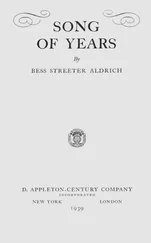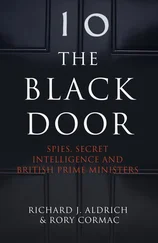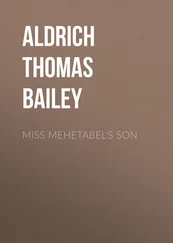The RAF sigint units based at CSE Watton were especially lucky not to lose any aircraft in this mini air-war. In 1954 a Gloster Meteor from 527 Squadron, which claimed to be on a ‘radio calibration mission’, strayed over the border into East Germany. This seems to have been due to a navigational error. The crew were oblivious to their mistake, but soon realised they were running short of fuel, and opted to land at the next visible airfield. The pilot, Sergeant Don Coleman, and his navigator, Sergeant Mike Thomson, stepped out onto the tarmac and – to their horror – realised that the approaching troops had red stars on their caps. The Soviets spent several weeks inspecting the aircraft before it was returned to the RAF. The incident earned Coleman the unwelcome nickname ‘Dan Dare’.
The following year, another Gloster Meteor on a ‘radio calibration flight’ from Watton arrived unannounced in East Germany. Again the pilots had run out fuel, but this time they could not find a runway, and opted for a belly landing in a field. After a suitable delay for technical inspection of the radio warfare equipment on board, the Meteor was again returned by the Soviets. On the night of 26 June 1955 there was a much more serious incident, when a radio countermeasures Lincoln (WD132) from 199 Squadron exercising over West Germany collided with a USAF F-86D Sabre jet fighter. The Lincoln crashed seven miles north of Bitburg, and all the crew were lost. 22
Early incidents like these mostly occurred in northern Europe. However, Turkey and the Black Sea were also of enormous intelligence importance because of the presence of rocket-testing sites in the southern Soviet Union around the Caucasus. As early as September 1950, Britain’s Technical Radio Interception Committee was directing a series of flights against Soviet radar targets on the Black Sea. 23 The sought-after prize was elint from Soviet guided missiles being tested at Kapustin Yar. In 1954, trials had been held in Turkey to see if ground stations could intercept the signals, but the equipment was not sensitive enough, and in any case it was hard to collect signals during the early stages of rocket flight, since they were blocked by hills near the launch site. The only option was to get closer to the take-off sites and to monitor from altitude, which meant flights over the Black Sea or the Caspian Sea. The most desperate option was perilous missions by SIS’s Technical Collection Service, with human spies furnished with specially equipped suitcases, rather like the suitcase radios carried by wartime resistance workers, which were something of a liability, since close inspection would have revealed their true purpose. 24 This was the unit that also specialised in gathering intelligence on the Soviet atomic programme. 25
The nearest miss probably occurred in 1955, when the RAF’s 192 Squadron identified the first MiG-15 with airborne radar by flying directly at the Soviet border in an area near the Caspian Sea. However, the slow-flying RB-29 Washington only narrowly escaped being shot down, and returned peppered with holes. The Squadron Commander, Group Captain Norman Hoad, was awarded an Air Force Cross for the discovery of this new Soviet airborne radar. 26 Was the risk worth it? As a result of this incident, in mid-December 1955 some members of the Joint Intelligence Committee began to challenge the remorseless collection of elint on Soviet air-defence capabilities. To some it seemed both expensive and dangerous. However, Eric Jones, the Director of GCHQ, argued that in the realm of sigint it was possible neither to dart about from one subject to another, nor to concentrate on one only. He reminded them that it was the extremely thorough, if tedious, collection of ‘order of battle’ intelligence that had allowed them to pick up specialist guided weapons activity that was of extreme interest to all three services, revealing new Soviet missile developments. While this was true, one might argue that Jones was bound to defend ‘order of battle’ activity for institutional reasons. Struggling against high-grade Soviet cyphers that could not be broken, this was the best product he could squeeze out from the other available electronic sources. Moreover, it reflected GCHQ’s secret deal with the armed services, which wanted sigint to have a strong focus on assisting military operations. The RAF shared the costs of airborne collection, and as Jones remarked, more than half of GCHQ’s work was now in support of defence activity. 27
Britain’s most dangerous and dramatic Cold War sigint operations remain largely unknown. Some of the most perilous missions were not in the air along the Inner German Border, but at sea. During the early 1950s, GCHQ and the Royal Navy had developed a joint programme for the concerted monitoring of Soviet signals around Murmansk and other important naval bases within the Arctic Circle. This involved sending submarines into Soviet territorial waters, and in some cases actually inside Soviet harbours. The Red Fleet knew these activities were taking place, and often responded with depth charges, making such secret missions breathtakingly dangerous.
The most important figures on these missions were the ‘sparkers’. These were radio communications operators who had been sent to the Royal Navy’s Signals School, located at the naval station HMS Mercury near Petersfield in Hampshire, for special training in sigint listening. Here, a secret unit called the Radio Warfare Special Branch cooperated with GCHQ and planned the naval dimension of Britain’s sigint operations. Its task was not only to record Soviet voice traffic and telegraphy, but also to listen out for elint, including transmission from new Soviet radars on high frequencies such as ‘S band’ and ‘X band’. In May 1953, ten new recruits passed through the basic radio course at Mercury and then, to their abundant horror, were told that they had ‘volunteered’ for duty on submarines. The Royal Navy had only recently lost the submarines HMS Truculent and HMS Affray in tragic accidents, so submarines were not a particularly popular assignment at the time. One of the more thoughtful individuals on this basic radio course, Tony Beasley, managed to dodge immediate deployment to submarines by volunteering for a sigint course with ‘Special Branch’ that included a long period ashore learning Russian at HMS Pucklechurch.
By 1954, Beasley had managed to join the elite ranks of the Radio Warfare personnel, which had its own heavily guarded compound on the northern edge of HMS Mercury. Here he was first instructed in Soviet communication procedures in preparation for his language course. Although HMS Mercury was far from the Soviet Union, radio signals bounced off the ionosphere at night, so transmissions from as far afield as Baku and Tbilisi could be heard comfortably. Towards the end of the ten-week ‘special course’ Beasley began to study the arcane subject of Soviet radars and guidance systems, which constituted elint collection. He had found his forte in the mysterious world of electronic signatures and wavebands, and accordingly he was diverted away from the Russian course at HMS Pucklechurch to become more of an elint specialist. Soon he was serving on fishery-protection vessels, including HMS Truelove, Mariner and Pickle. Operating out of Norwegian harbours such as Tromsø, their fishery duties gave them a legitimate reason to be close to Soviet exercises in northern waters, allowing them to sit listening at their leisure, often using their own personal monitoring equipment which they put together ‘Heath Robinson style’.
Late in 1954, Beasley and three of his comrades found themselves back at HMS Mercury, where they had been called in to see the head of the Radio Warfare Special Branch, Lieutenant Commander Harry Selby-Bennett. As experienced elint and comint operators, they had been selected for ‘special duties’. They were told to write six weeks’ worth of letters that would be posted to their families at intervals, but were given no information about where they were going, or even what they might do. Arriving at Portsmouth with their kitbags, they were transferred to a motor launch, still none the wiser about their mysterious task or their destination. One of the four suggested it might be a submarine, but the other three laughed out loud at the idea, since none of them had been through the stringent obligatory three-month submarine course at nearby Gosport, which included passing through the famous hundred-foot salt-water escape tower. Moments later they pulled alongside the vessel on which they were to serve for many months.
Читать дальше












